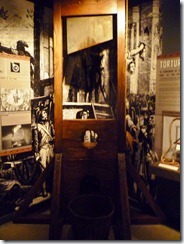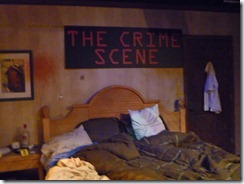MOVIES THAT INSPIRED THE DRIFT LORDS SERIES
TROLL (1986)
http://www.imdb.com/title/tt0092115/
Michael Moriarty, Shelley Hack, and Noah Hathaway
A troll king searches for an emerald ring that will transform him back to human. His search is centered in a San Francisco apartment building where a boy lives whose name is Harry Potter. This boy discovers he is special and only his wizardly powers can save the world. Hmm…Does this scenario and character name sound familiar?
THOR (2011)
http://www.imdb.com/title/tt0800369/
Chris Hemsworth, Anthony Hopkins, and Natalie Portman
Thor disobeys his father and garners the wrath of the frost giants. As punishment, he’s cast from the celestial home of the gods in Asgard and sent to Earth minus his superpowers. Here he meets scientist Jane Forster and learns compassion for the mortals on Earth. Their lives are threatened when Thor’s estranged brother Loki decides to conquer the world for himself. Wondrous world building, special effects, and superheroes make this an entertaining film, but the father-son relationships at the heart of the story are what makes it memorable.
THE LORD OF THE RINGS TRILOGY (2001-2003)
http://www.imdb.com/title/tt0120737/
Elijah Wood, Ian McKellen, and Orlando Bloom
Hobbit Frodo Baggins and friends go on a quest to throw an evil ring into the pit of fire where it was forged in order to destroy it. Various nasty creatures try to stop them. Excellent world building and a classic example of epic fantasy.
PRINCE OF PERSIA: The Sands of Time (2010)
http://www.imdb.com/title/tt0473075/
Jake Gyllenhaal, Gemma Arterton, and Ben Kingsley
A young prince invades an enemy city and steals a dagger containing the sands of time.Too late, he realizes the mistake he’s committed. Forced to flee after being accused of murdering the king, he wonders if he can use the magic sands to reverse time, correct the wrongs, and prevent an evil plot to change the world. Helping him is the princess whose land he had invaded. This film is pure escapist fun.
CITY OF EMBER (2008)
http://www.imdb.com/title/tt0970411/
Saoirse Ronan, Toby Jones, and Bill Murray
The people of Ember rely on their electrical generator for power, without which their mysterious world would go black. Lighting fluctuations cause alarm to the citizens but none more than two children who suspect there may be an escape route leading out of the city. But the rules forbid anyone from venturing beyond the borders, and the corrupt Mayor is quick to punish transgressors. Clues left by a previous official may lead our heroes to the answers, if the Mayor doesn’t capture them first. This fascinating YA science fiction adventure sticks in your mind.
HARRY POTTER AND THE DEATHLY HALLOWS: PART 2 (2011)
http://www.imdb.com/title/tt1201607/
Daniel Radcliffe, Emma Watson, and Rupert Grint
Wizard Harry Potter and his friends face a final battle against evil Lord Voldemort and his allies at the Hogwarts School of Wizardry and Witchcraft. I kept these scenes in mind when crafting the final battle between my heroes and their foes.
ALMIGHTY THOR (2011)
http://www.imdb.com/title/tt1792794/
Cody Deal, Patricia Velasquez, Richard Grieco, Kevin Nash
[SPOILER ALERT!]
This cheesy, low-budget film starts out with Loki arising from the fires of the Underworld. He seeks the Hammer of Invincibility so he can destroy the Tree of Life that supports the nine realms. From Hell, he opens a gateway to Asgard where he attacks Odin, the ruler of the gods, and his sons, Thor and Baldir. Loki, a black-cloaked figure who speaks like a New Yorker, wields his magic through a bone wand with a globe on its end. He summons the Garmr, three monsters to aid him.
“This portends to be an evil day,” says Odin before he consults the 3 Norns. His dreams of stars turning black means destruction, the goddesses tell him. The magic hammer is the only weapon that can destroy the Tree of Life, and Odin must give it to Loki. Ragnarok, the end of the world, is upon them.
Through trickery, Loki kills Baldir and slays Odin. The dying Odin begs Thor to retrieve the hammer. “You’re our chance to change the fate of gods.”
Jarnsaxa, a servant of Odin, rescues Thor from Loki’s grasp. “Find them. Kill the girl anyway you like but Thor lives for now,” Loki orders his minions.
The girl leads Thor to the gateway for Midgard. She had been second in command under Odin’s father of the Valkyries and teaches him warrior skills.
Loki’s beast finds them and they escape through the portal to Los Angeles. J. lives there and takes him home. “This does not seem like the dwelling of a demi-goddess,” Thor says upon surveying her modest apartment. She claims she has to live like a human while in Midgard and shows him a gun. They don long coats as disguises and set off to find the Tree of Life. “Humans don’t believe in it anymore,” the girl claims with a hint of sadness. They pass through another portal. Thor feels the essence of life inside the great tree beating like a heart. Before he can near the center, a guardian knight challenges him. Thor wins the battle and retrieves the magic hammer. He and the girl return to Midgard.
Loki arrives in L.A. in his spiky black armor and cape and tries to trick Thor into betraying the girl. Thor fights him and wins his wand, tipped with the bone of Urrl. Loki claims it can release Odin and Baldin from Hel, but Thor doesn’t believe him and kills Loki.
The girl says Thor must get rid of the wand because it’s the devil’s tool. Then Loki materializes in front of them. “I killed you,” Thor says in astonishment. “Killed me? I never was alive.”
Loki summons a monster to keep Thor from going with the girl to Vahalla to train for battle.
Thor harnesses the power of the hammer to fight them. The girl kills the beast.
Thor is wounded but the girl saves him. They attempt to escape but Loki holds them baack. Thor heals himself with a magic potion. The girl is hurt when he finds her. As she dies and Thor sobs over her body, she turns into Loki. Having deceived Thor, Loki snatches the hammer from him.
Loki unleashes monsters who tear apart L.A. causing fires and destruction. He keeps Thor and the girl bound and forces them to watch. “It is the end of life, the end of time, the end of you…Soon the nine realms will no longer exist.” He hurtles the girl into the fiery depths of Hel and Thor is next. Loki passes through the gateway to the Tree of Life and demolishes it.
Thor realizes he is unable to stop Fate. Ragnarok comes. While in Hel, he forges a new hammer and returns to Midgard. With renewed vigor, Thor battles Loki. “Nothing is over. We control our own fate.” Thor defeats Loki, heals the Tree, and life blossoms again.
If you’re looking for purely escapist entertainment, this film will provide that much. But there are barely any actors involved except for the three principles mentioned. The dialogue is as over the top as the acting. See Thor with Chris Hemsworth for a movie worth its weight.
<><><>
Do you watch a movie and get inspired to read the book, or do you read the book first and then watch the movie?
<><><>
Warrior Prince: The Drift Lords Series by Nancy J. Cohen
When mythologist and Florida resident Nira Larsen accepts a job as tour guide for a mysterious stranger, she’s drawn into a nightmare reality where ancient myths come alive and legendary evils seek to destroy her. To survive, she must awaken her dormant powers, but the only person who can help is the man whose touch inflames her passion.
After a dimensional rift in the Bermuda Triangle cracks open and an ancient enemy invades Earth, Zohar—leader of the galactic warriors known as the Drift Lords—summons his troops. He doesn’t count on a redheaded spitfire getting in his way and capturing his heart. Nira has the power to defeat the enemy and to enslave Zohar’s soul. Can he trust her enough to accomplish his mission, or will she lure him to his doom?
Watch the Trailer: http://youtu.be/aVm2FIumw0o
Buy Now!













































